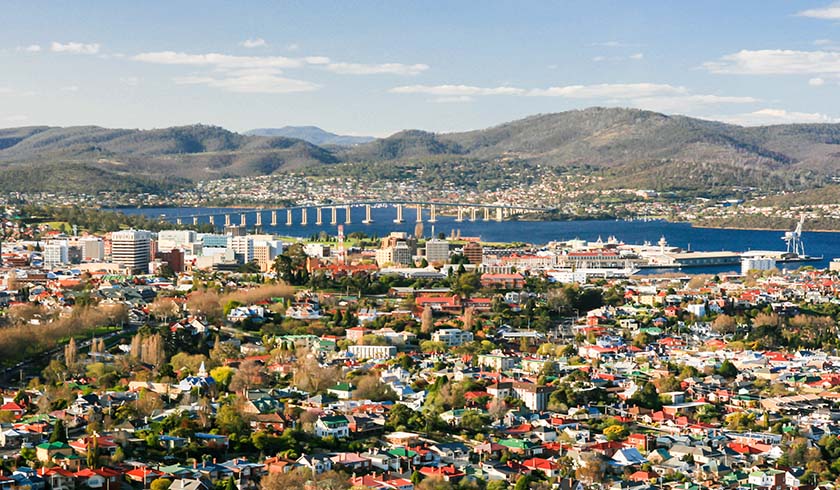Prices continue to balloon as capitals outpace the regions
Prices continued to balloon across the combined capital cities in May, with each capital city witnessing monthly growth of over 1 per cent.

National home values expanded by 2.2 per cent in May, trumping April’s 1.8 per cent growth figure, but falling short of the 32-year record high of 2.8 per cent recorded in March, CoreLogic’s latest Hedonic Home Value Index revealed.
To continue reading the rest of this article, please log in.
Create free account to get unlimited news articles and more!
This latest growth has brought the national median value to $634,355.
According to CoreLogic’s research director, Tim Lawless, Australia’s housing market remains “firmly entrenched in a housing boom”, with growth conditions remaining broad-based, both geographically and across housing types and valuation segments.
“Values were up by more than 1 per cent across every capital city over the month, with both house and unit values lifting across the board. Of the 334 SA3 sub-regions analysed by CoreLogic, 97 per cent have recorded a lift in housing values over the past three months.
“Such a synchronised upswing is an absolute rarity across Australia’s diverse array of housing markets,” Mr Lawless noted.
Looking at the capital cities alone, their combined growth stood at 2.3 per cent in May, slightly above the combined regional growth of 2 per cent – marking the second time in three months that growth conditions in the capital cities outpaced the regional markets.
Of the capitals, Hobart saw the biggest rise at 3.2 per cent, followed by Sydney with 3 per cent, Darwin with 2.7 per cent, Brisbane with 2 per cent, Adelaide with 1.9 per cent, Melbourne with 1.8 per cent, Canberra with 1.7 per cent and Perth with 1.1 per cent.
Regional NSW led monthly gains (2.5 per cent), while values in regional WA had the weakest result (-0.1 per cent).
Over the last three months, however, Sydney maintained its lead with growth of 9.3 per cent, followed by Darwin with 7.9 per cent, as Perth again occupied last place with growth at 3.8 per cent.
As for growth across the last 12 months, Darwin emerged as the strongest contender, having clocked gains of an impressive 20.3 per cent to 31 May – the strongest annual gain on record for the capital city. It was followed by Hobart with 16.5 per cent, Canberra with 15.6 per cent, Adelaide with 11.8 per cent, Sydney with 11.2 per cent, Brisbane with 10.6 per cent and Melbourne with 5 per cent.
But despite impressive jumps by the other capitals, Sydney remained the most expensive capital city, with a median value of $970,355 – higher than the capital city average of $715,100. Canberra followed with $746,573; then Melbourne with $740,562; Brisbane with $574,572; Hobart with $574,543; Perth with $521,688; Adelaide with $500,881 and Darwin with $478,072.
Looking ahead
With the surge in housing prices occurring almost in unison across the country, Mr Lawless said he expects a continuous appreciation of values throughout the year and into 2022, supported by record-low mortgage rates and high levels of consumer confidence.
However, growth could slow to a more gradual pace as affordability constraints impact activity, particularly among first home buyers.
“Worsening affordability pressures are likely to impact first home buyers more than other segments of the market, and there are already signs that first home buyer demand is pulling back.
“Investors, on the other hand, are stepping up their activity across the housing market, motivated by prospects for continued capital gain and low interest rates. The resurgence of investor participation, and high levels of activity in the owner-occupier non first home buyer segment may account for the continued strength in dwelling markets despite affordability constraints,” according to the researcher.
The rise in housing supply, along with demand remaining low due to closed international borders, could also hamper the rise of housing values.
But this is not set to happen for some time, with the total number of properties up for sale at about 24 per cent below its long-term average.
“House approvals are moving through record highs, but it will take some time for these approvals to transition through the construction phase to a completed dwelling,” Mr Lawless said.
“The rapid rate of absorption is keeping advertised inventory levels extremely low, despite the rise in new listings. As a consequence, vendors remain in a strong selling position, while buyers have a weak position at the negotiation table.”

